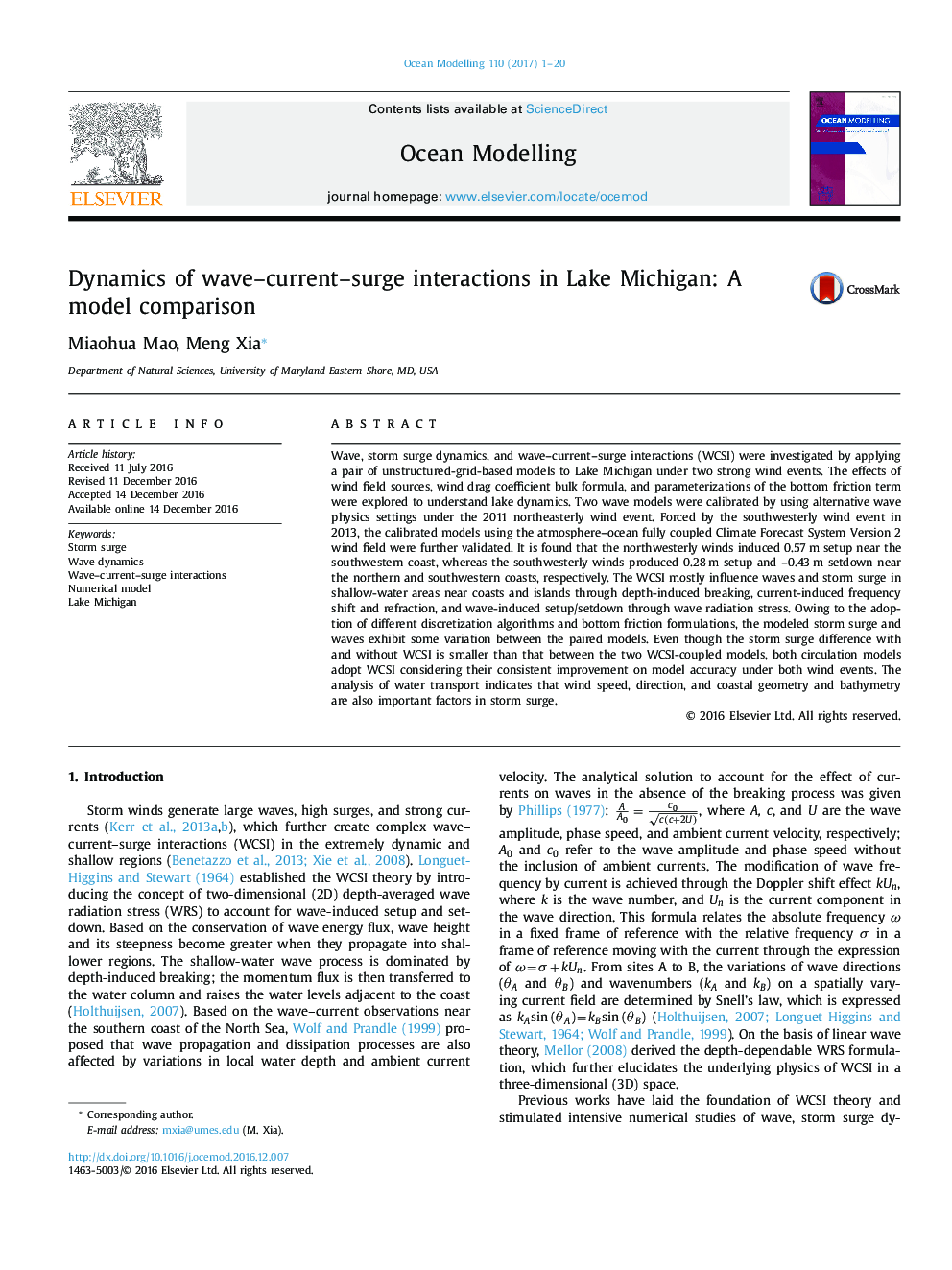| کد مقاله | کد نشریه | سال انتشار | مقاله انگلیسی | نسخه تمام متن |
|---|---|---|---|---|
| 5766427 | 1627739 | 2017 | 20 صفحه PDF | دانلود رایگان |
- Two wave-current-surge coupled modeling systems are configured to Lake Michigan.
- Wind forcing and coastal geometry significantly impact modeled storm surge.
- Wave-current-surge interactions are strong near the coasts and islands.
- Various responses of storm surge and waves to two modeling systems are detected.
- Surface wind and bottom friction drag coefficients are critical to storm surge.
Wave, storm surge dynamics, and wave-current-surge interactions (WCSI) were investigated by applying a pair of unstructured-grid-based models to Lake Michigan under two strong wind events. The effects of wind field sources, wind drag coefficient bulk formula, and parameterizations of the bottom friction term were explored to understand lake dynamics. Two wave models were calibrated by using alternative wave physics settings under the 2011 northeasterly wind event. Forced by the southwesterly wind event in 2013, the calibrated models using the atmosphere-ocean fully coupled Climate Forecast System Version 2 wind field were further validated. It is found that the northwesterly winds induced 0.57Â m setup near the southwestern coast, whereas the southwesterly winds produced 0.28Â m setup and -0.43Â m setdown near the northern and southwestern coasts, respectively. The WCSI mostly influence waves and storm surge in shallow-water areas near coasts and islands through depth-induced breaking, current-induced frequency shift and refraction, and wave-induced setup/setdown through wave radiation stress. Owing to the adoption of different discretization algorithms and bottom friction formulations, the modeled storm surge and waves exhibit some variation between the paired models. Even though the storm surge difference with and without WCSI is smaller than that between the two WCSI-coupled models, both circulation models adopt WCSI considering their consistent improvement on model accuracy under both wind events. The analysis of water transport indicates that wind speed, direction, and coastal geometry and bathymetry are also important factors in storm surge.
Journal: Ocean Modelling - Volume 110, February 2017, Pages 1-20
